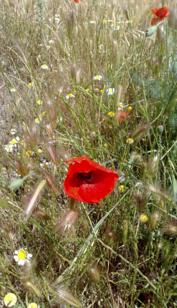|
|
| Calluses are the bodys attempt to protect itself from heavy wear and pressure. |
| Foot corns are small areas of callus which is seated more deeply through concentrated pressure points. |
| The shape of a foot corn is normally conical and they usually are found in close proximity to a joint, a metatarsal or a toe joint. |
The foot or toe joint that is pressed hard against the shoe material forms the pressure point or friction point.
This pressure / friction point will in turn become the begining of the foot corn.
The usual points or areas of the foot where a corn will form are normally over the jointed areas of the toes.
Underneath, or on the base of the foot where there is a pressure point (under the jointed areas of the toe).
One of the commonest places for a corn to form is on the jointed part of the small toe.
The small toe is the outside part of the foot and, with tight fitting shoes, will be a natural pressure point on the foot.
Relieving the foot pain or toe pain
Relief from pain can be had by removing the pressure point or the object rubbing against the corn.
This can be done by placing a ‘horseshoe shaped ’ corn plaster around the corn.
It is horseshoe shaped in order to give the pressure an ‘exit’.
If it were a round shaped plaster there is no exit for the pressure.
Foot soak
can be another form of relief from the
toe pain
or foot pain.
The water with some salts or naturally formed minerals added to it can soften the callus or the corn.
Using healthy footwear or shoes that give more room inside, without rubbing or chaffing is another way of avoiding the pain and even preventing the condition from getting worse.
The placing of a cotton wool cushion around the corn area may help, secured by a sticky plaster.
If the corn is on the sole of the foot then soft insoles or shoe liners can relieve the pain.
Another, more drastic way, is to have the corn removed.
This should only be done by a trained and qualified Chiropodist or
Podiatrist.
It should not to be attempted at home by the inexperienced.
Types of Foot Corns
- Vascular corn. This type has to cut out in small pieces at a time, leaving the base to be treated with a silver nitrate solution.
- Neural corn. The Chiropodist will take great care with this as it can be very painful.
- Neuro-vascular. This is a combination of the two above and needs great care to remove without bleeding and without too much pain.
- Soft corn. As its name suggests it is soft to an almost sticky state.
- Seed corn. These appear on the sole of the foot and look like seeds sprinkled on the foot.
- Sub ungal corn. This particularly nasty little devil appears under the toenail and, can at first be wrongly diagnosed as toenail fungus.
Otherwise it may well bleed.
The last thing a Chiropodist will want is this situation as it means that the skin is broken and open to infection.
Care must be taken to use anti bacterial or anti fungal spray for use inside the shoe and the socks too.
Usually found between the toes or in the softer skin areas of the foot. As other corns it has to be cut out by a specialist to be removed.
They are generally smaller than normal foot corns, are not raised at the head and are usually found in groups.
They are not too common and cause the bearer none to little discomfort and can go away through wear and tear.
They can be easily removed and treated by a specialist Podiatrist.
This is because where the corn pushes up under the toenail then that area can appear yellowish, giving the look of toenail fungus. However this type is rather more painful.
The causes of a sub ungal corn is the same as other corns, pressure.
Pressure directly down onto the toenail itself. Again, usually from ill fitting shoes.
Relief from pain can be had from making the toenail a little thinner and pushing cotton wool under the toenail to lift it a little. (Change cotton wool frequently as it is a breeding ground for bacteria).
Or add a drop of tea tree oil to the cotton wool.
A Chiropodist may use a nail drill to relieve the pressure or cut a ‘V’ in the nail over the pressure point alleviating toe pain.
If you think you have a foot corn, there is a part of your footwear that is causing it.
You must change your shoes or your style of shoes so that they can not make these pressure points and allow a corn to form.
Secondly, and perhaps more importantly, it is always wise to seek help from a trained and qualified Chiropodist or Podiatrist.
A Pedicurist is not qualified for this job of removing corns.
A professional will soon have you up and running around in no time at all, give you great advice on how to avoid these little painful monsters and all done as painlessly as possible.
From Foot Corns to Foot conditions
Jump from Foot Corns to Toenail Care home page
| Turn your knowledge your hobby or passion into your own business |
S.B.I helps you to take your hobby your knowledge or passion and turn it into an enjoyable and profitable Home Business.
A superb step by step home study course with amazingly helpful forums.
The energy from your fellow S.B.I ers drives you on to success, click on the S.B.I. box above to take a look.
This just could be the break you have been looking for.
Foot Care
Reflexology
Hover your pointer over the foot to see where it affects your bodys organs.
My top picks
Foot Cream
Spin the ferris wheel by clicking on the arrows and selsct your product.
Click on the product for a full description
Advertise with us
If you have a good product to advertise that is related to these pages then please Contact us
We have a growing following and pride ourselves in providing the best advice and products for Toenail Care and Healthy Feet.
Sell you photos to Dreamstime, a photo publishing site.
A click on the photo will take you there.
Skin care
H2O Skincare.
A click on the picture will take you to the full product range.
Wild flowers

A photo from near my 'Cortijo' in Andalucia, Spain.



